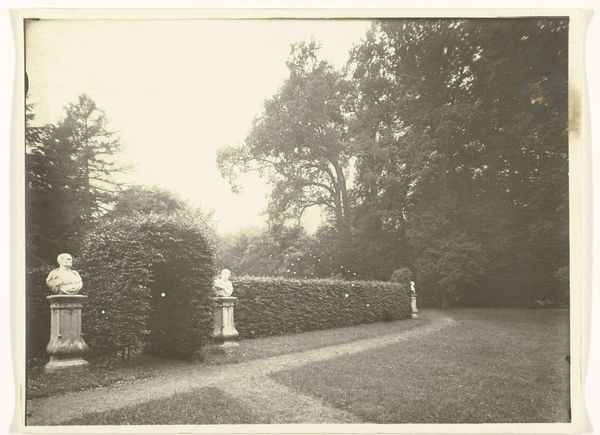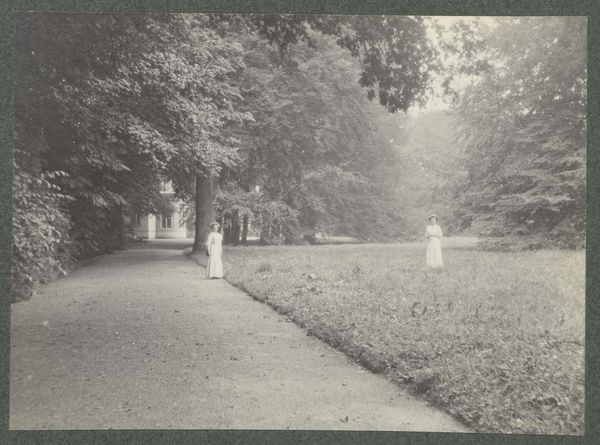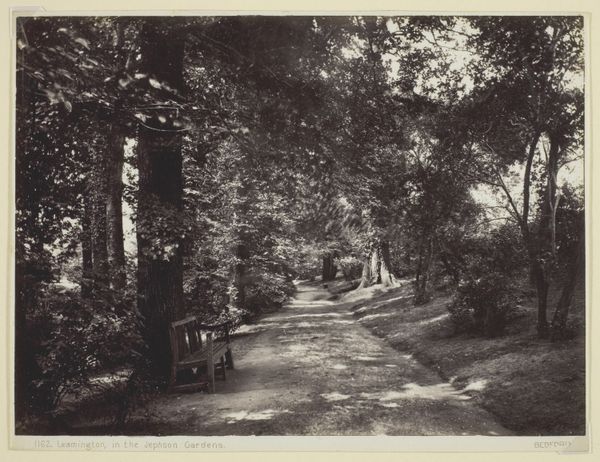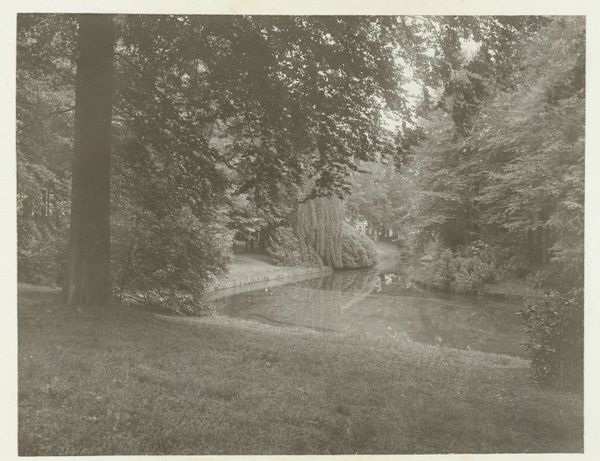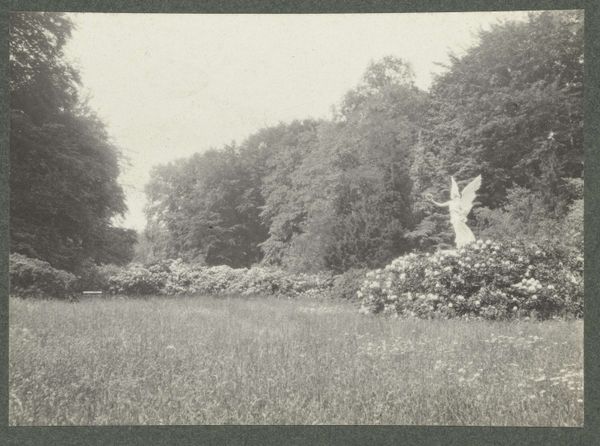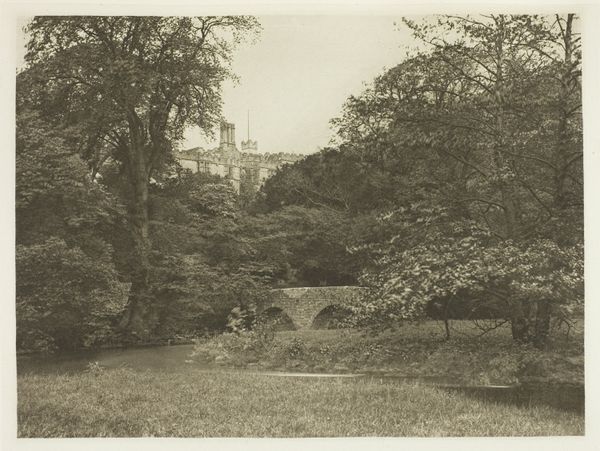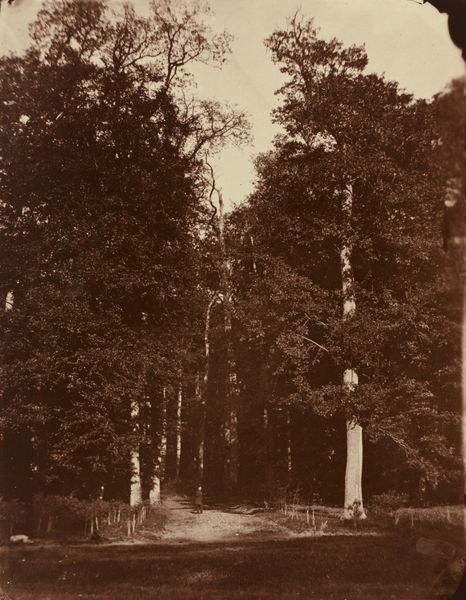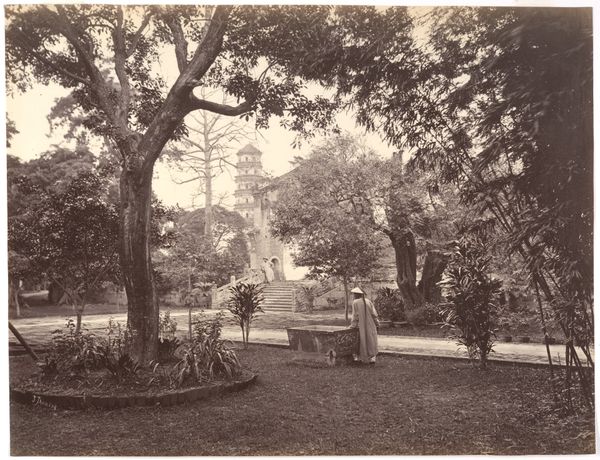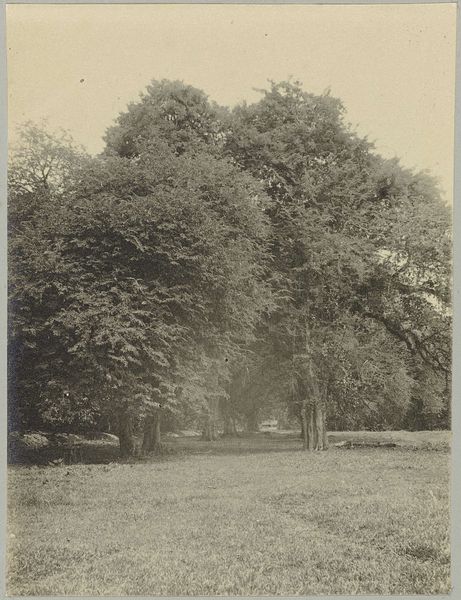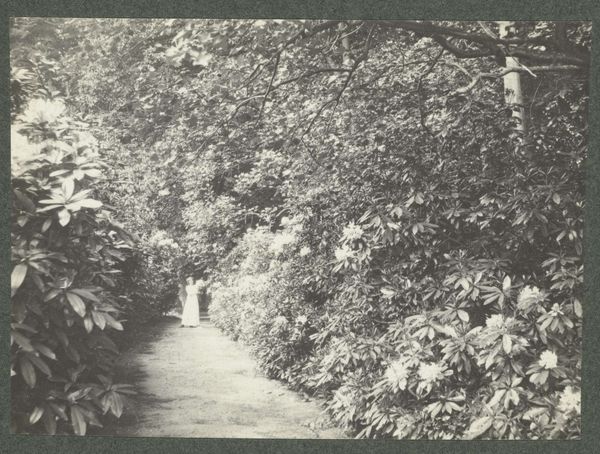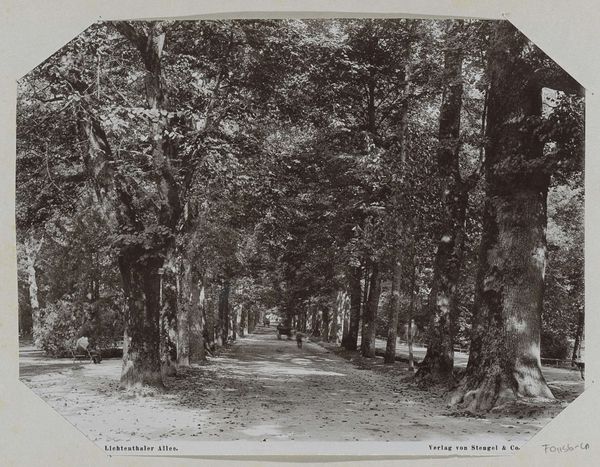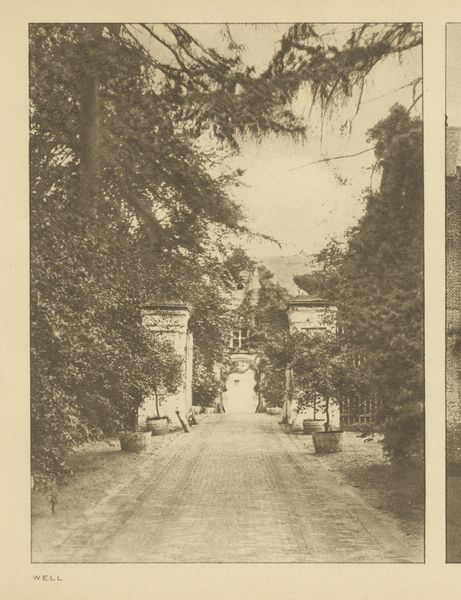
Tuinpad van Landgoed De Paauw met aan weerszijden beplanting in een bosrijke omgeving c. 1913
0:00
0:00
Dimensions: height 73 mm, width 98 mm, height 198 mm, width 263 mm
Copyright: Rijks Museum: Open Domain
Curator: Right now, we’re looking at Geldolph Adriaan Kessler's photographic print, "Tuinpad van Landgoed De Paauw met aan weerszijden beplanting in een bosrijke omgeving", which translates to "Garden Path of Estate De Paauw with planting on both sides in a wooded area," taken around 1913. Editor: Oh, wow. It's…eerie. It feels almost dreamlike. The soft greys, the way the path kind of dissolves into the trees, like it’s a road into another dimension. Curator: Precisely! There's a quiet stillness, a stillness cultivated and controlled through labor. Think of the gardeners meticulously shaping the shrubbery, ensuring the path remains both wild and refined. Look at the lines of the photograph. Even then it reflects both artistic approach and the tools used. Editor: So you're saying, the *image* of nature reflects the artifice? Curator: In a way, yes. Kessler captures a designed landscape. Every plant, every tree has been placed deliberately. It represents more than just a pretty scene; it’s the embodiment of ownership and control over nature. We see this tension between natural materials like the dirt path itself or the shrubbery being deliberately molded and maintained to specific measurements, a task that surely involved teams of workers who had their own experience in turn of nature. Editor: That certainly gives a new context to it! I still sense an odd nostalgia and romance though, regardless. Despite the possible social dynamics you mention I feel inclined to escape here to read, think, dream. Maybe that means I'm falling for the photographer's ploy. Curator: Art's about drawing responses—escapism can certainly be one. Kessler's composition, regardless, invites this. The converging path creates a sense of depth, doesn't it? Our eye travels into the darkness. The image's materials help facilitate a journey through space as well, drawing us along and inwards. The tonality creates an almost ethereal atmosphere that, given the knowledge about material culture in photography, it also may come across as 'cheap' given black and white was easier to reproduce during the era. It's something to think about for sure! Editor: Okay, yes, much to think about. But it remains for me a captivating piece! Curator: Indeed. Kessler gives us a layered experience here, blending artistry, the materiality of its composition, with an awareness of nature's shaping to reflect societal ideas about its stewardship, no matter how paradoxical those ideals can seem.
Comments
No comments
Be the first to comment and join the conversation on the ultimate creative platform.

